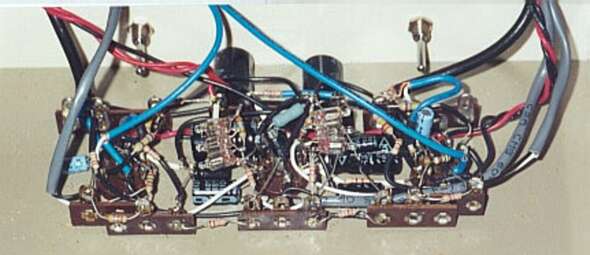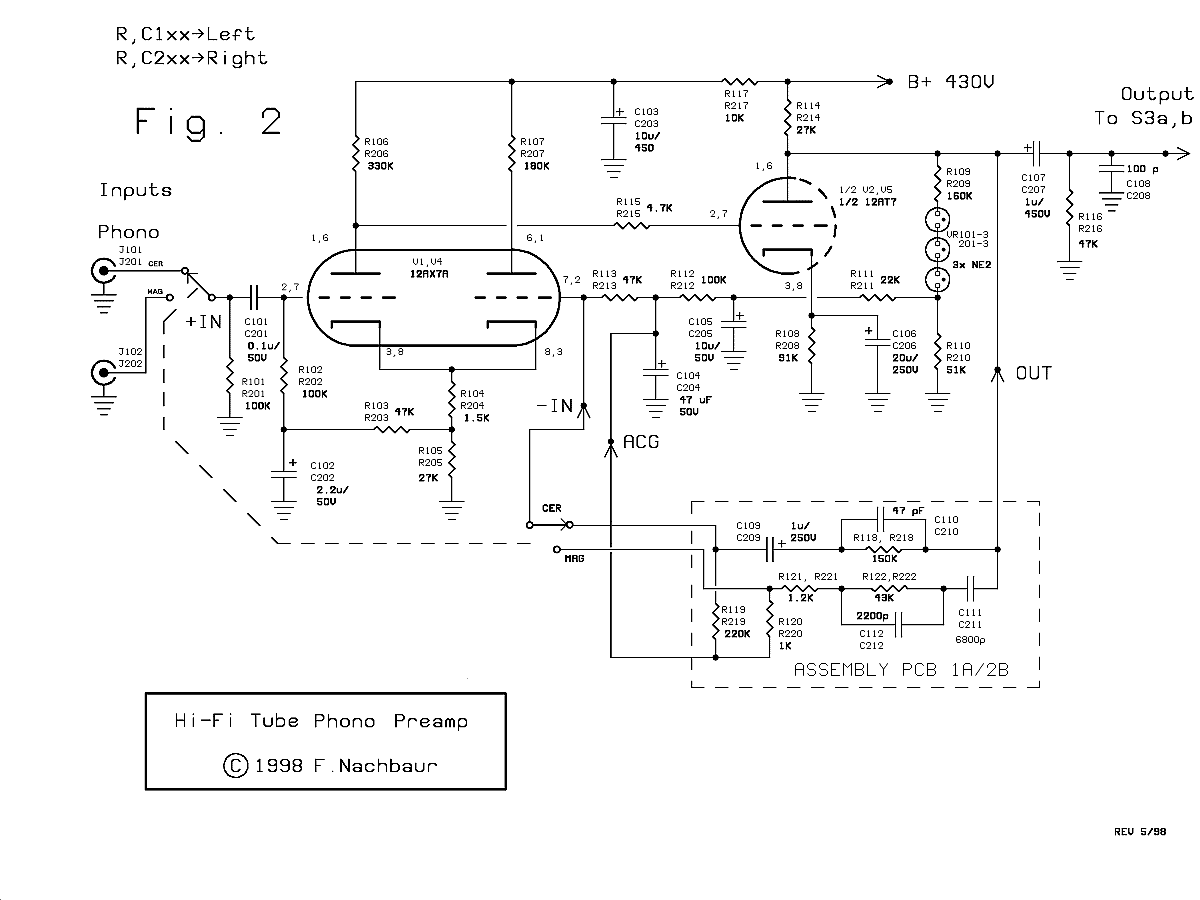A HIGH-PRECISION TUBE PHONO PREAMPLIFIER
by Fred Nachbaur, Dogstar Music ©1998, 2000

A photograph of the Phono Preamp, hard-wired version
(power supply is in other case-half)
3A-2: PREAMPLIFIER OUTPUT STAGE
The output of our differential amplifier is direct-coupled to the grid of the second stage, V2, a
12AT7 dual triode. This tube was chosen over the more common (and cheaper) 12AU7 because it
sports about three times the gain (transconductance), yet is capable of almost the same output
drive.

Phono Preamplifier
R115 in series with the grid of V2 introduces a high-frequency pole with V2's grid-to-plate
capacitance, effectively limiting high-frequency response. This allows us to run the preamp with
relatively heavy negative feedback (low gain) without worrying about oscillations caused by phase
shifts. You can think of it in op-amp terms as "internal compensation".
The difficulty with direct-coupled vacuum tubes is that the grid of the second stage sits at a
substantial voltage above ground (about 200 volts in our circuit). This is why we need a relatively
high B+ voltage, since we have to insure that the plate circuit of the second stage has enough
headroom. So why bother at all? After all, tube amps have been made for over half a century with
good old RC interstage coupling. The answer has to do with dynamic stability as the tubes age.
Unlike conventional multi-stage tube amplifiers, our circuit is self-levelling because its DC biasing
is in a closed feedback loop. Another reason for using direct coupling is because of the relatively
large voltage swings at this point in the circuit. Capacitors (even good ones) can exhibit some
non-linearity in capacitance vs. voltage -- a fact that is often overlooked in amplifier design.
Direct coupling eliminates this capacitor, and as a bonus gets rid of one more pole in our transfer
function that could complicate our application of negative feedback for gain and frequency
response control.
In order to bias V2's grid at the proper voltage (about -1 volts with respect to cathode), we need
a humungous cathode resistor R108. To avoid losing all our AC gain, this resistor is bypassed for
AC by capacitor C106.





